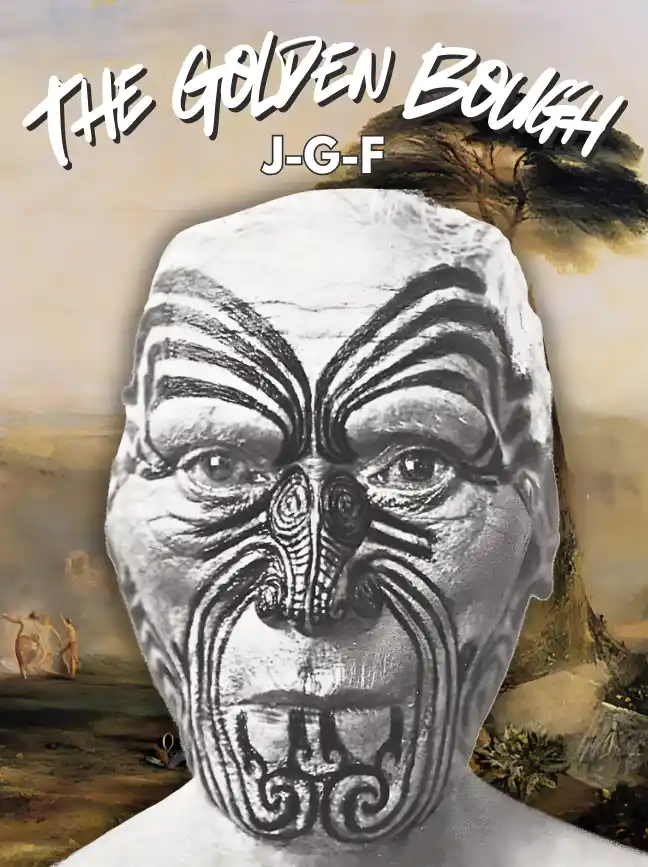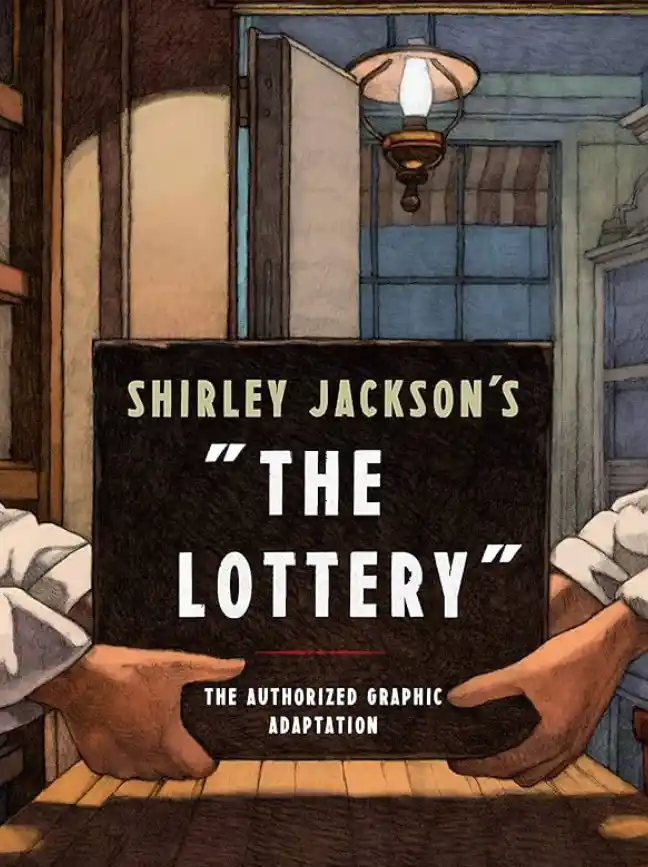CHAPTER 15
DIONYSUS
IN the preceding chapters we saw that in antiquity the civilised nations of western Asia and Egypt pictured to themselves the changes of the seasons, and particularly the annual growth and decay of vegetation, as episodes in the life of gods, whose mournful death and happy resurrection they celebrated with dramatic rites of alternate lamentation and rejoicing. But if the celebration was in form dramatic, it was in substance magical; that is to say, it was intended, on the principles of sympathetic magic, to ensure the vernal regeneration of plants and the multiplication of animals, which had seemed to be menaced by the inroads of winter. In the ancient world, however, such ideas and such rites were by no means confined to the Oriental peoples of Babylon and Syria, of Phrygia and Egypt; they were not a product peculiar to the religious mysticism of the dreamy East, but were shared by the races of livelier fancy and more mercurial temperament who inhabited the shores and islands of the Aegean.
Death and resurrection of Oriental gods of vegetation. The
Dying and Reviving god of vegetation in ancient Greece.
The god Dionysus or Bacchus is best known to us as a personification of the vine and of the exhilaration produced by the juice of the grape. His ecstatic worship, characterised by wild dances, thrilling music, and tipsy excess, appears to have originated among the rude tribes of Thrace, who were notoriously addicted to drunkenness. The resemblance which his story and his ceremonies present to those of Osiris have led some enquirers both in ancient and modern times to hold that Dionysus was merely a disguised Osiris, imported directly from Egypt into Greece. But the great preponderance of evidence points to his Thracian origin, and the similarity of the two worships is sufficiently explained by the similarity of the ideas and customs on which they were founded.
Dionysus, the god of the vine, originally a Thracian deity.
While the vine with its clusters was the most characteristic manifestation of Dionysus, he was also a god of trees in general. Thus we are told that almost all the Greeks sacrificed to ‘Dionysus of the tree’. In Boeotia one of his titles was ‘Dionysus in the tree’. His image was often merely an upright post, without arms, but draped in a mantle, with a bearded mask to represent the head, and with leafy boughs projecting from the head or body to shew the nature of the deity.
Dionysus a god of trees, especially of fruit-trees.
Further, there are indications, few but significant, that Dionysus was conceived as a deity of agriculture and the corn. He is spoken of as himself doing the work of a husbandman: he is reported to have been the first to yoke oxen to the plough, which before had been dragged by hand alone; and some people found in this tradition the clue to the bovine shape in which, as we shall see, the god was often supposed to present himself to his worshippers. Thus guiding the ploughshare and scattering the seed as he went, Dionysus is said to have eased the labour of the husbandman. Further, we are told that in the land of the Bisaltae, a Thracian tribe, there was a great and fair sanctuary of Dionysus, where at his festival a bright light shone forth at night as a token of an abundant harvest vouchsafed by the deity; but if the crops were to fail that year, the mystic light was not seen, darkness brooded over the sanctuary as at other times. Moreover, among the emblems of Dionysus was the winnowing-fan, that is the large open shovel- shaped basket, which down to modern times has been used by farmers to separate the grain from the chaff by tossing the corn in the air. This simple agricultural instrument figured in the mystic rites of Dionysus; indeed the god is traditionally said to have been placed at birth in a winnowing-fan as in a cradle: in art he is represented as an infant so cradled; and from these traditions and representations he derived the epithet of Liknites, that is, ‘He of the Winnowing-fan’.
Dionysus as a god of agriculture and the corn.
The winnowing-fan as an emblem of Dionysus.
Dionysus was believed to have died a violent death, but to have been brought to life again; and his sufferings, death, and resurrection were enacted in his sacred rites. His tragic story is thus told by the poet Nonnus.
Zeus in the form of a serpent visited Persephone, and she bore him Zagreus, that is, Dionysus, a horned infant. Scarcely was he born, when the babe mounted the throne of his father Zeus and mimicked the great god by brandishing the lightning in his tiny hand. But he did not occupy the throne long; for the treacherous Titans, their faces whitened with chalk, attacked him with knives while he was looking at himself in a mirror. For a time he evaded their assaults by turning himself into various shapes, assuming the likeness successively of Zeus and Cronus, of a young man, of a lion, a horse, and a serpent. Finally, in the form of a bull, he was cut to pieces by the murderous knives of his enemies. His Cretan myth, as related by Firmicus Maternus,* ran thus. He was said to have been the bastard son of Jupiter, a Cretan king. Going abroad, Jupiter transferred the throne and sceptre to the youthful Dionysus, but, knowing that his wife Juno cherished a jealous dislike of the child, he entrusted Dionysus to the care of guards upon whose fidelity he believed he could rely. Juno, however, bribed the guards, and amusing the child with rattles and a cunningly-wrought looking-glass lured him into an ambush, where her satellites, the Titans, rushed upon him, cut him limb from limb, boiled his body with various herbs, and ate it. But his sister Minerva, who had shared in the deed, kept his heart and gave it to Jupiter on his return, revealing to him the whole history of the crime. In his rage, Jupiter put the Titans to death by torture, and, to soothe his grief for the loss of his son, made an image in which he enclosed the child’s heart, and then built a temple in his honour. In this version a Euhemeristic* turn has been given to the myth by representing Jupiter and Juno (Zeus and Hera) as a king and queen of Crete. The guards referred to are the mythical Curetes who danced a war-dance round the infant Dionysus, as they are said to have done round the infant Zeus. Very noteworthy is the legend, recorded both by Nonnus and Firmicus, that in his infancy Dionysus occupied for a short time the throne of his father Zeus. So Proclus tells us that ‘Dionysus was the last king of the gods appointed by Zeus. For his father set him on the kingly throne, and placed in his hand, the sceptre, and made him king of all the gods of the world.’ Such traditions point to a custom of temporarily investing the king’s son with the royal dignity as a preliminary to sacrificing him instead of his father.
Myth of the death and resurrection of Dionysus.
Legend that the infant Dionysus occupied for a short time the
throne of his father Zeus.
Turning from the myth to the ritual, we find that the Cretans celebrated a biennial festival at which the passion of Dionysus was represented in every detail. All that he had done or suffered in his last moments was enacted before the eyes of his worshippers, who tore a live bull to pieces with their teeth and roamed the woods with frantic shouts. In front of them was carried a casket supposed to contain the sacred heart of Dionysus, and to the wild music of flutes and cymbals they mimicked the rattles by which the infant god had been lured to his doom. Where the resurrection formed part of the myth, it also was acted at the rites, and it even appears that a general doctrine of resurrection, or at least of immortality, was inculcated on the worshippers; for Plutarch, writing to console his wife on the death of their infant daughter, comforts her with the thought of the immortality of the soul as taught by tradition and revealed in the mysteries of Dionysus.*
Death and resurrection of Dionysus represented in his rites.
A feature in the mythical character of Dionysus, which at first sight appears inconsistent with his nature as a deity of vegetation, is that he was often conceived and represented in animal shape, especially in the form, or at least with the horns, of a bull. Thus he is spoken of as ‘cow-born’, ‘bull’, ‘bull-shaped’, ‘bull-faced’, ‘bull-browed’, ‘bull-horned’, ‘horn-bearing’, ‘two-horned’, ‘horned’. He was believed to appear, at least occasionally, as a bull. His images were often, as at Cyzicus, made in bull shape, or with bull horns; and he was painted with horns. Types of the horned Dionysus are found amongst the surviving monuments of antiquity. On one statuette he appears clad in a bull’s hide, the head, horns, and hoofs hanging down behind. Again, he is represented as a child with clusters of grapes round his brow, and a calf’s head, with sprouting horns, attached to the back of his head. On a red-figured vase the god is portrayed as a calf-headed child seated on a woman’s lap. The people of Cynaetha in north-western Arcadia held a festival of Dionysus in winter, when men, who had greased their bodies with oil for the occasion, used to pick out a bull from the herd and
carry it to the sanctuary of the god. Dionysus was supposed to inspire their choice of the particular bull, which probably represented the deity himself; for at his festivals he was believed to appear in bull form. The women of Elis hailed him as a bull, and prayed him to come with his bull’s foot. They sang, ‘Come hither, Dionysus, to thy holy temple by the sea; come with the Graces to thy temple, rushing with thy bull’s foot, O goodly bull, O goodly bull!’ The Bacchanals of Thrace wore horns in imitation of their god. The rending and devouring of live bulls and calves appear to have been a regular feature of the Dionysiac rites.* When we consider the practice of portraying the god as a bull or with some of the features of the animal, the belief that he appeared in bull form to his worshippers at the sacred rites, and the legend that in bull form he had been torn in pieces, we cannot doubt that in rending and devouring a live bull at his festival the worshippers of Dionysus believed themselves to be killing the god, eating his flesh, and drinking his blood.
Dionysus represented in the form of a bull.
Another animal whose form Dionysus assumed was the goat. One of his names was ‘Kid’. At Athens and at Hermion he was worshipped under the title of ‘the one of the Black Goatskin’, and a legend ran that on a certain occasion he had appeared clad in the skin from which he took the title. In the wine-growing district of Phlius, where in autumn the plain is still thickly mantled with the red and golden foliage of the fading vines, there stood of old a bronze image of a goat, which the husbandmen plastered with gold-leaf as a means of protecting their vines against blight. The image probably represented the vine-god himself. To save him from the wrath of Hera, his father Zeus changed the youthful Dionysus into a kid; and when the gods fled to Egypt to escape the fury of Typhon, Dionysus was turned into a goat. Hence when his worshippers rent in pieces a live goat and devoured it raw, they must have believed that they were eating the body and blood of the god.
Dionysus as a goat.
The custom of killing a god in animal form, which we shall examine more in detail further on, belongs to a very early stage of human culture, and is apt in later times to be misunderstood. The advance of thought tends to strip the old animal and plant gods of their bestial and vegetable husk, and to leave their human attributes (which are always the kernel of the conception) as the final and sole residuum. In other words, animal and plant gods tend to become purely anthropomorphic. When they have become wholly or nearly so, the animals and plants which were at first the deities themselves, still retain a vague and ill-understood connexion with the anthropomorphic gods who have been developed out of them. The origin of the relationship between the deity and the animal or plant having been forgotten, various stories are invented to explain it. These explanations may follow one of two lines according as they are based on the habitual or on the exceptional treatment of the sacred animal or plant. The sacred animal was habitually spared, and only exceptionally slain; and accordingly the myth might be devised to explain either why it was spared or why it was killed.
Devised for the former purpose, the myth would tell of some service rendered to the deity by the animal; devised for the latter purpose, the myth would tell of some injury inflicted by the animal on the god. The reason given for sacrificing goats to Dionysus exemplifies a myth of the latter sort.
They were sacrificed to him, it was said, because they injured the vine.
Now the goat, as we have seen, was originally an embodiment of the god himself. But when the god had divested himself of his animal character and had become essentially anthropomorphic, the killing of the goat in his worship came to be regarded no longer as a slaying of the deity himself, but as a sacrifice offered to him; and since some reason had to be assigned why the goat in particular should be sacrificed, it was alleged that this was a punishment inflicted on the goat for injuring the vine, the object of the god’s especial care. Thus we have the strange spectacle of a god sacrificed to himself on the ground that he is his own enemy. And as the deity is supposed to partake of the victim offered to him, it follows that, when the victim is the god’s old self, the god eats of his own flesh. Hence the goat- god Dionysus is represented as eating raw goat’s blood; and the bull-god Dionysus is called ‘eater of bulls’. On the analogy of these instances we may conjecture that wherever a deity is described as the eater of a particular animal, the animal in question was originally nothing but the deity himself.
Live goats rent and devoured by his worshippers.
Later misinterpretations of the custom of killing a god in animal
form.
It remains to mention that in some places, instead of an animal, a human being was torn in pieces at the rites of Dionysus. This was the practice in Chios and Tenedos; and at Potniae in Boeotia the tradition ran that it had been formerly the custom to sacrifice to the goat-smiting Dionysus a child, for whom a goat was afterwards substituted. At Orchomenus, as we have seen, the human victim was taken from the women of an old royal family.
As the slain bull or goat represented the slain god, so, we may suppose, the human victim also represented him.
The legends of the deaths of Pentheus and Lycurgus,* two kings who are said to have been torn to pieces, the one by Bacchanals, the other by horses, for their opposition to the rites of Dionysus, may be, as I have already suggested, distorted reminiscences of a custom of sacrificing divine kings in the character of Dionysus and of dispersing the fragments of their broken bodies over the fields for the purpose of fertilising them. In regard to Lycurgus, king of the Thracian tribe of the Edonians, it is expressly said that his subjects at the bidding of an oracle caused him to be rent in pieces by horses for the purpose of restoring the fertility of the ground after a period of barrenness and dearth. There is no improbability in the tradition.
We have seen that in Africa and other parts of the world kings or chiefs have often been put to death by their people for similar reasons. Further, it is significant that King Lycurgus is said to have slain his own son Dryas with an axe in a fit of madness, mistaking him for a vine-branch. Have we not in this tradition a reminiscence of a custom of sacrificing the king’s son in place of the father?
The legendary deaths of Pentheus and Lycurgus may be
reminiscences of a custom of sacrificing divine kings in the
character of Dionysus.
The theory that in prehistoric times Greek and Thracian kings or their sons may have been dismembered in the character of the vine-god or the corn-god for the purpose of fertilising the earth or quickening the vines has
received of late years some confirmation from the discovery that down to the present time in Thrace, the original home of Dionysus, a drama is still annually performed which reproduces with remarkable fidelity some of the most striking traits in the Dionysiac myth and ritual.*
Survival of Dionysiac rites among the modern Thracian
peasantry.
The drama, which may reasonably be regarded as a direct descendant of the Dionysiac rites, is annually performed at the Carnival in all the Christian villages which cluster round Viza, the ancient Bizya, a town of Thrace situated about midway between Adrianople and Constantinople. In antiquity the city was the capital of the Thracian tribe of the Asti; the kings had their palace there, probably in the acropolis, of which some fine walls are still standing. Inscriptions preserved in the modern town record the names of some of these old kings. The date of the celebration is Cheese Monday, as it is locally called, which is the Monday of the last week of Carnival. The principal parts in the drama are taken by two men disguised in goatskins. Each of them wears a headdress made of a complete goatskin, which is stuffed so as to rise a foot or more like a shako over his head, while the skin falls over the face, forming a mask with holes cut for the eyes and mouth. One of the two skin-clad actors carries a bow and the other a wooden effigy of the male organ of generation. Both these actors must be married men. Two unmarried boys dressed as girls and sometimes called brides also take part in the play; and a man disguised as an old woman in rags carries a mock baby in a basket; the brat is supposed to be a seven- months’ child born out of wedlock and begotten by an unknown father. The basket in which the hopeful infant is paraded bears the ancient name of the winnowing-fan (likni, contracted from liknon) and the babe itself receives the very title. ‘He of the Winnowing-fan’ (Liknites) which in antiquity was applied to Dionysus. Two other actors, clad in rags with blackened faces and armed with stout saplings, play the parts of a gypsy-man and his wife; others personate policemen armed with swords and whips; and the troupe is completed by a man who discourses music on a bagpipe.
Drama annually performed at the Carnival in the villages round
Viza, an old Thracian capital.
The actors in the drama.
Such are the masqueraders. The morning of the day on which they perform their little drama is spent by them going from door to door collecting bread, eggs, or money. At every door the two skin-clad maskers knock, the boys disguised as girls dance, and the gypsy man and wife enact an obscene pantomime on the straw-heap before the house. When every house in the village has been thus visited, the troop takes up position on the open space before the village church, where the whole population has already mustered to witness the performance. After a dance hand in hand, in which all the actors take part, the two skin-clad maskers withdraw and leave the field to the gypsies, who now pretend to forge a ploughshare, the man making believe to hammer the share and his wife to work the bellows. At this point the old woman’s baby is supposed to grow up at a great pace, to develop a huge appetite for meat and drink, and to clamour for a wife. One of the skin-clad men now pursues one of the two pretended brides, and a mock marriage is celebrated between the couple. After these nuptials have been performed with a parody of a real wedding, the mock bridegroom is shot by his comrade with the bow and falls down on his face like dead. His slayer thereupon feigns to skin him with a knife; but the dead man’s wife laments over her deceased husband with loud cries, throwing herself across his prostrate body. In this lamentation the slayer himself and all the other actors join in: a Christian funeral service is burlesqued; and the pretended corpse is lifted up as if to be carried to the grave. At this point, however, the dead man disconcerts the preparations for his burial by suddenly coming to life again and getting up. So ends the drama of death and resurrection.
The ceremonies include the forging of a ploughshare, a mock
marriage, and a pretence of death and resurrection.
In these ceremonies, still annually held at and near an old capital of Thracian kings, the points of similarity to the ritual of the ancient Thracian deity Dionysus are sufficiently obvious. The goatskins in which the principal actors are disguised remind us of the identification of Dionysus
with a goat: the infant, cradled in a winnowing-fan and taking its name from the implement, answers exactly to the traditions and the monuments which represent the infant Dionysus as similarly cradled and similarly named: the pretence that the baby is a seven-months’ child born out of wedlock and begotten by an unknown father tallies precisely with the legend that Dionysus was born prematurely in the seventh month as the offspring of an intrigue between a mortal woman and a mysterious divine father: the same coarse symbol of reproductive energy which characterised the ancient ritual of Dionysus figures conspicuously in the modern drama: and the simulated slaughter and resurrection of the same goatskin-clad actor may be compared with the traditional slaughter and resurrection of the god himself.
Analogy of these modern Thracian ceremonies to the ancient
rites of Dionysus.






